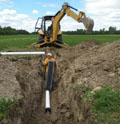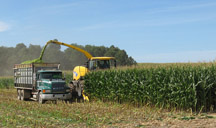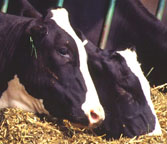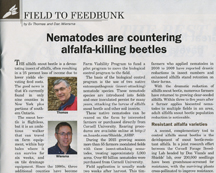
Innovative Mastitis Research Data to be Presented Feb. 5 in Chazy, Feb. 12 in Watertown
The results of Northern New York Agricultural Development Program-funded research into the lesser-known causes of mastitis in dairy cows will be presented at the NNYADP annual meetings on February 5 at Miner Institute in Chazy and February 12 at the Ramada Inn in Watertown. The meetings are open to all farmers, agribusiness operators and the public. Registration for the meetings is not required. For more information, contact 315.376.5270.
Project leader Dr. Jessica Scillieri Smith, a veterinarian with the Cornell University Quality Milk Production Services (QMPS) laboratory at Canton, NY, will report on testing that focused on five dairy herds identified in the first year of the NNYADP-funded project in 2014 with higher numbers of cows with mastitis caused by the Lactococci species of bacteria.
Lactococci organisms represented more than 23 percent of the cause of nearly 500 ‘other Strep’ infections diagnosed in milk samples from 143 farms in NNY in the 2014 phase of this NNYADP project, and was identified as the cause of more than 50 percent of mastitis cases on some farms.
The NNYADP funding supported development by QMPS of enhanced laboratory testing methods to help farmers and veterinarians accurately identify Lactococcus infections in milk samples. Prior to this project in NNY, Lactococcus had not previously been identified using standard microbiology techniques in testing labs.
“Success with new testing methods will lead to more accurate diagnosis and better informed management decisions by dairy herd managers, and supports the opportunity to better understand mastitis and improve management decisions,” says Smith.
Smith has presented this research at veterinary and dairy meetings in New York, Vermont and Louisiana and at the National Mastitis Council meeting last week.
The Northern New York Agricultural Development Program provides small grants for on-farm research and technical assistance projects in Clinton, Essex, Franklin, Jefferson, Lewis and St. Lawrence counties. Learn more at www.nnyagdev.org. Funding for the Northern New York Agricultural Development Program is supported by the New York State Senate and administered through the New York State Department of Agriculture and Markets.





